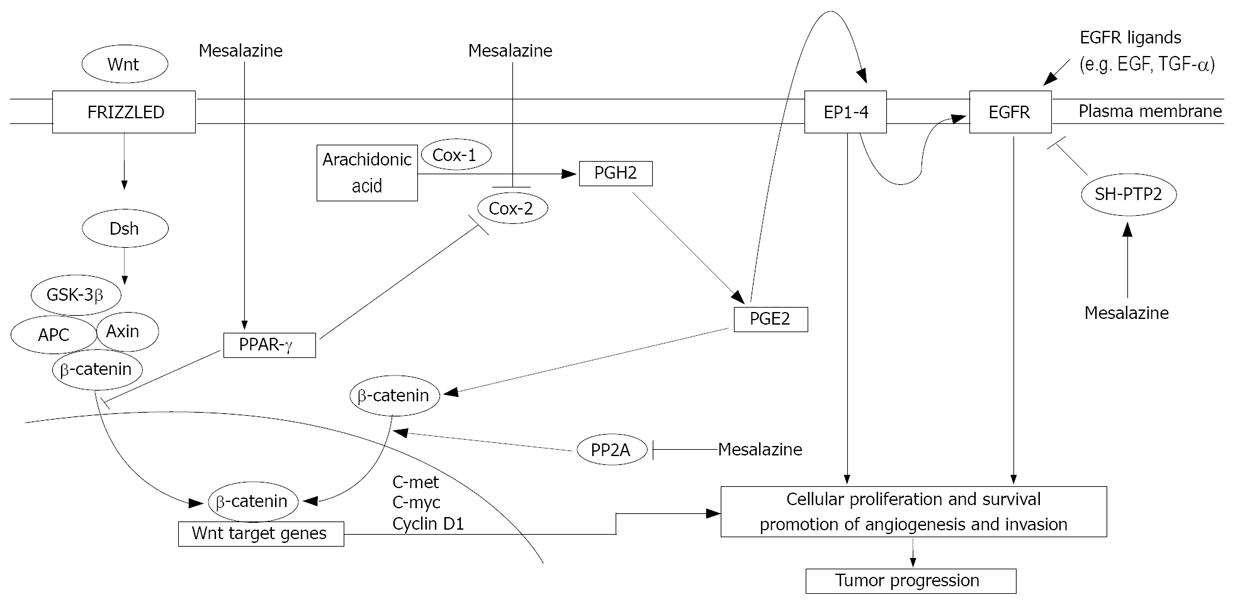Copyright
©2008 The WJG Press and Baishideng.
World J Gastroenterol. Jul 28, 2008; 14(28): 4434-4439
Published online Jul 28, 2008. doi: 10.3748/wjg.14.4434
Published online Jul 28, 2008. doi: 10.3748/wjg.14.4434
Figure 1 Some putative molecular mechanisms that underlie the antineoplastic activity of mesalazine.
Mesalazine inhibits COX-2, thereby blocking synthesis of PGH2, an intermediate that is metabolized into various prostaglandins, including PGE2. PGE2 binds to its cell surface cognate receptors (EP1-4) and sustains various functions of tumor cells, including proliferation, survival, angiogenesis and invasion. These are mediated through the transactivation of EGFR or activation of other intracellular pathways. The antineoplastic effects of mesalazine rely also on its ability to inhibit Wnt/β-catenin, through inactivation of PP2A (and downstream down-regulation of β-catenin), and EGFR pathways. Moreover, mesalazine activates PPAR-γ, thus leading to inactivation of the Wnt/β-catenin pathway and down-regulation of COX-2.
- Citation: Stolfi C, Pellegrini R, Franzè E, Pallone F, Monteleone G. Molecular basis of the potential of mesalazine to prevent colorectal cancer. World J Gastroenterol 2008; 14(28): 4434-4439
- URL: https://www.wjgnet.com/1007-9327/full/v14/i28/4434.htm
- DOI: https://dx.doi.org/10.3748/wjg.14.4434









